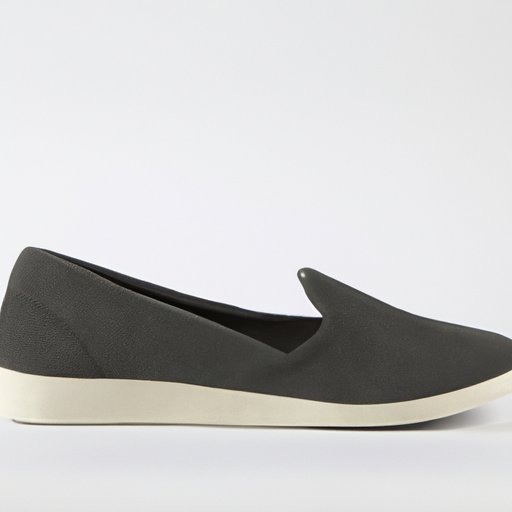Introduction
When you think of shoes, the first thing that comes to mind might be their stylish look, comfortable fit or perhaps their ability to protect your feet from the elements. But have you ever wondered what materials are used to make them? This article will explore the different fabrics, fibers, leather and rubber used in shoe manufacturing, as well as how these materials affect a shoe’s comfort, style and durability.
Exploring the Different Materials Used to Make Shoes
Shoe manufacturers use a variety of fabrics and fibers to create footwear for all types of occasions. Common fabrics and fibers include canvas, cotton, polyester, nylon, rayon and silk, as well as synthetic materials such as polyurethane and PVC. Each fabric or fiber has its own unique properties, from breathability and water resistance to flexibility and durability.
Synthetic materials, such as polyurethane and PVC, are man-made materials that are often used to make shoes that are more lightweight and durable than their natural counterparts. Synthetic materials are also less expensive and easier to care for, making them a popular choice among shoe manufacturers. Natural materials, such as cotton, leather and rubber, are derived from organic sources and provide a more traditional look and feel.
Leather: a timeless classic for footwear
Leather is one of the most popular materials used in shoe manufacturing due to its durability, breathability and flexibility. It is also a timeless classic for footwear, offering a luxurious look and feel. Leather shoes are perfect for formal occasions and come in a range of colors and styles.
Rubber: the versatile material behind your favorite sneakers
Rubber is another popular material used in shoe manufacturing. It is a highly flexible and durable material that is perfect for athletic shoes, such as sneakers and running shoes. Rubber provides excellent cushioning and shock absorption, making it a great choice for high-impact activities. It is also lightweight and breathable, making it ideal for warm-weather footwear.
How Textiles Impact a Shoe’s Comfort, Style and Durability
The type of fabric or fiber used in a shoe can have a big impact on its comfort, style and durability. Different materials offer different levels of breathability, water resistance, flexibility and durability, so it’s important to choose the right material for the job.
Comfort
When it comes to comfort, breathability is key. Cotton and canvas are two of the most breathable materials, making them a great choice for summer shoes. Synthetic materials such as polyester and nylon are also quite breathable, but not as much as cotton and canvas. Leather is another good option, as it is both breathable and flexible.
Style
Style is an important factor when it comes to choosing the right shoe material. Leather is a timeless classic that offers a luxurious look, while synthetic materials such as polyester and nylon are great for more casual styles. Cotton and canvas are perfect for creating a more laid back, relaxed look.
Durability
Durability is also an important consideration when selecting a shoe material. Leather is a very durable material, as is rubber. Synthetic materials such as polyester and nylon are also quite sturdy, while cotton and canvas are less durable but still able to withstand everyday wear and tear.
Eco-Friendly Alternatives to Traditional Shoe Materials
As people become increasingly aware of the environmental impact of their purchases, many shoe manufacturers are turning to eco-friendly materials. Eco-friendly materials are made from renewable resources, such as bamboo, hemp and cork, and are often biodegradable, meaning they won’t end up in landfills.
These materials are just as durable and comfortable as traditional materials, but are much better for the environment. They are also often more affordable, making them a great option for those looking to reduce their carbon footprint without breaking the bank.
Conclusion
Shoes are made from a variety of fabrics and fibers, including cotton, canvas, leather, rubber and synthetic materials. Each material offers its own unique benefits, from breathability and water resistance to flexibility and durability. Eco-friendly materials, such as bamboo, hemp and cork, are becoming increasingly popular due to their environmental benefits and affordability.
When choosing the right shoe material, it’s important to consider your needs and lifestyle. Comfort and style should be taken into account, as well as durability. By taking the time to research and compare materials, you can find the perfect pair of shoes for your lifestyle.


